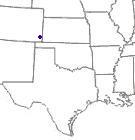|

Southeast Colorado | I'm not sure where you're at?.............but down on the southern end of the State where I'm at we typically have a pretty strong local market for dry hay. That's the only way it works at 2 to 3 tons/acre. It's a fairly inexpensive cropping option. But sometimes we don't even get a cutting due to drought. Along with the many years it's closer to 1 ton/acre. We only harvest once...........and I like to time it where we lay it down in the September to October time frame. That way if it gets rained on before baled, the quality won't degrade too much due to the outside air temps.
As far as nitrate goes.............we don't fertilize Nitrogen very heavy. 40 lbs actual N tops. Also, it helps to know the previous crop.........and how successful it was. For example, if you are planting into failed wheat that was fertilized...........I sure wouldn't add any extra N. Doing that could sure lead to high nitrates. Phos added is always a good thing...........if you can afford it. In my mind, P is usually added for the following crop. It's more of a long term plan.
Last thing...........I probably would never grow Sudan hay if I didn't own the haying equipment. We used to do quite a bit of custom haying. And even though we weren't getting rich, I'd sure have hated to pay my bill. Harvest costs eat up a good chunk of the gross revenue. | |
|


 Sorghum Sudan Eastern Colorado
Sorghum Sudan Eastern Colorado